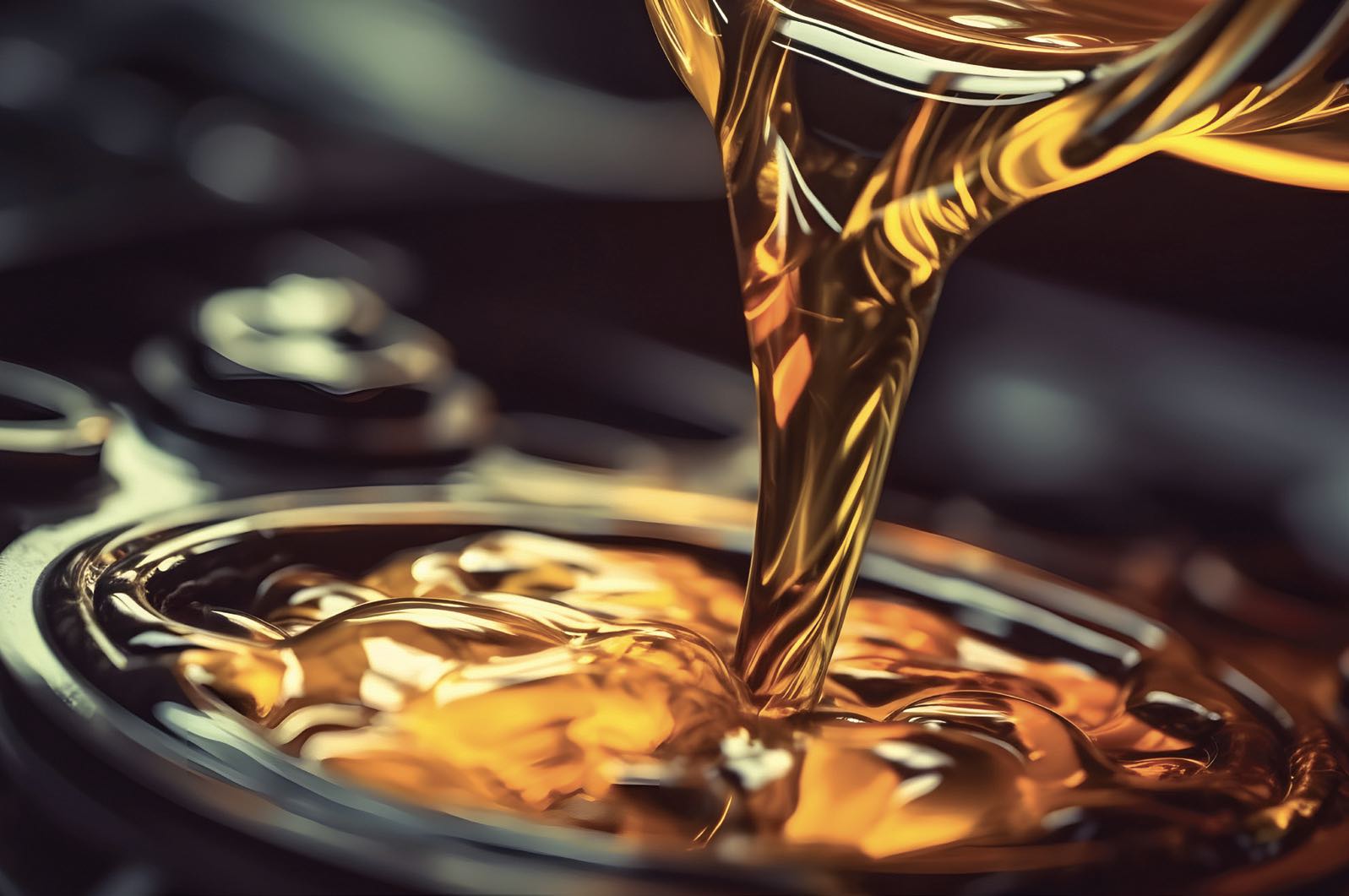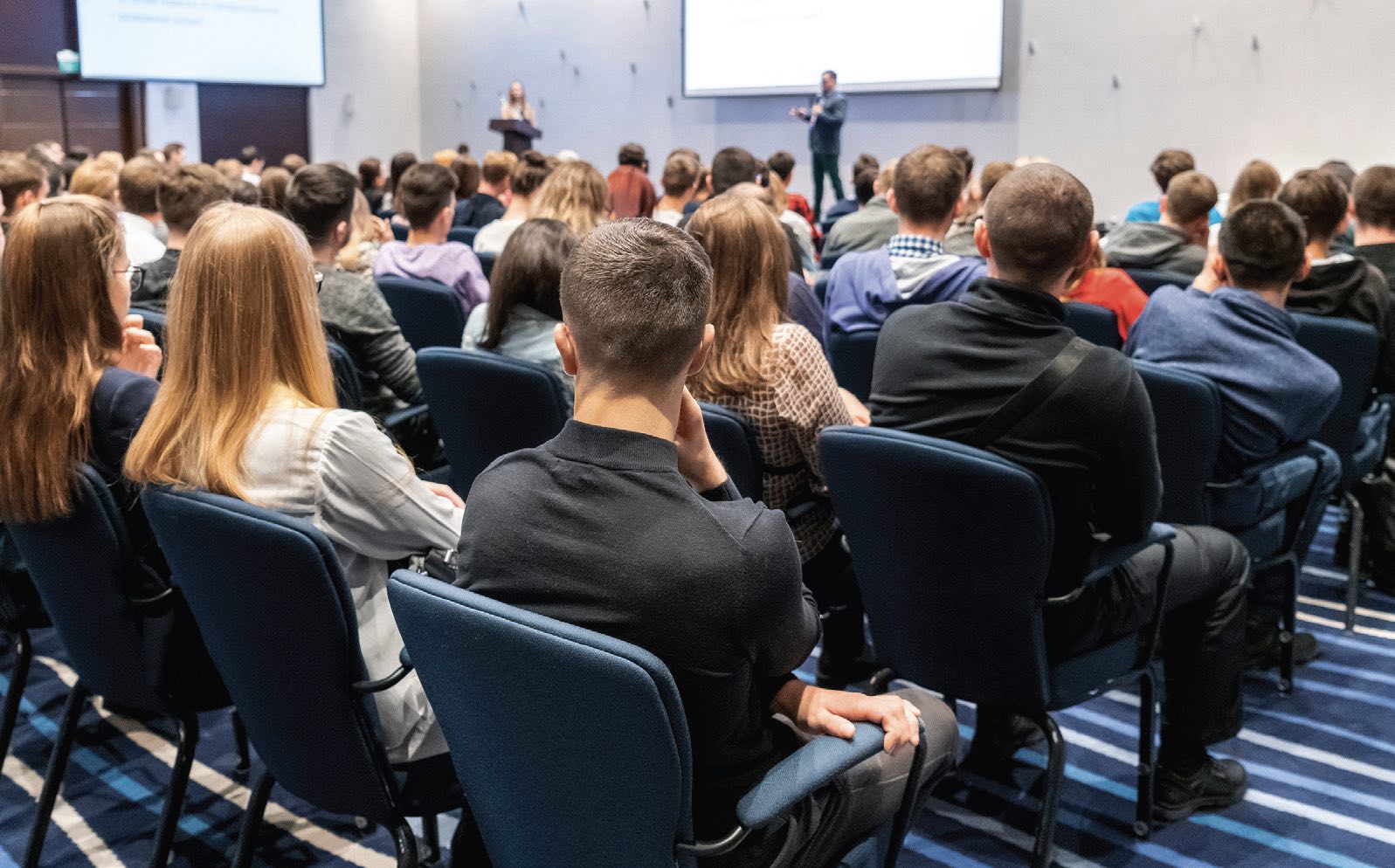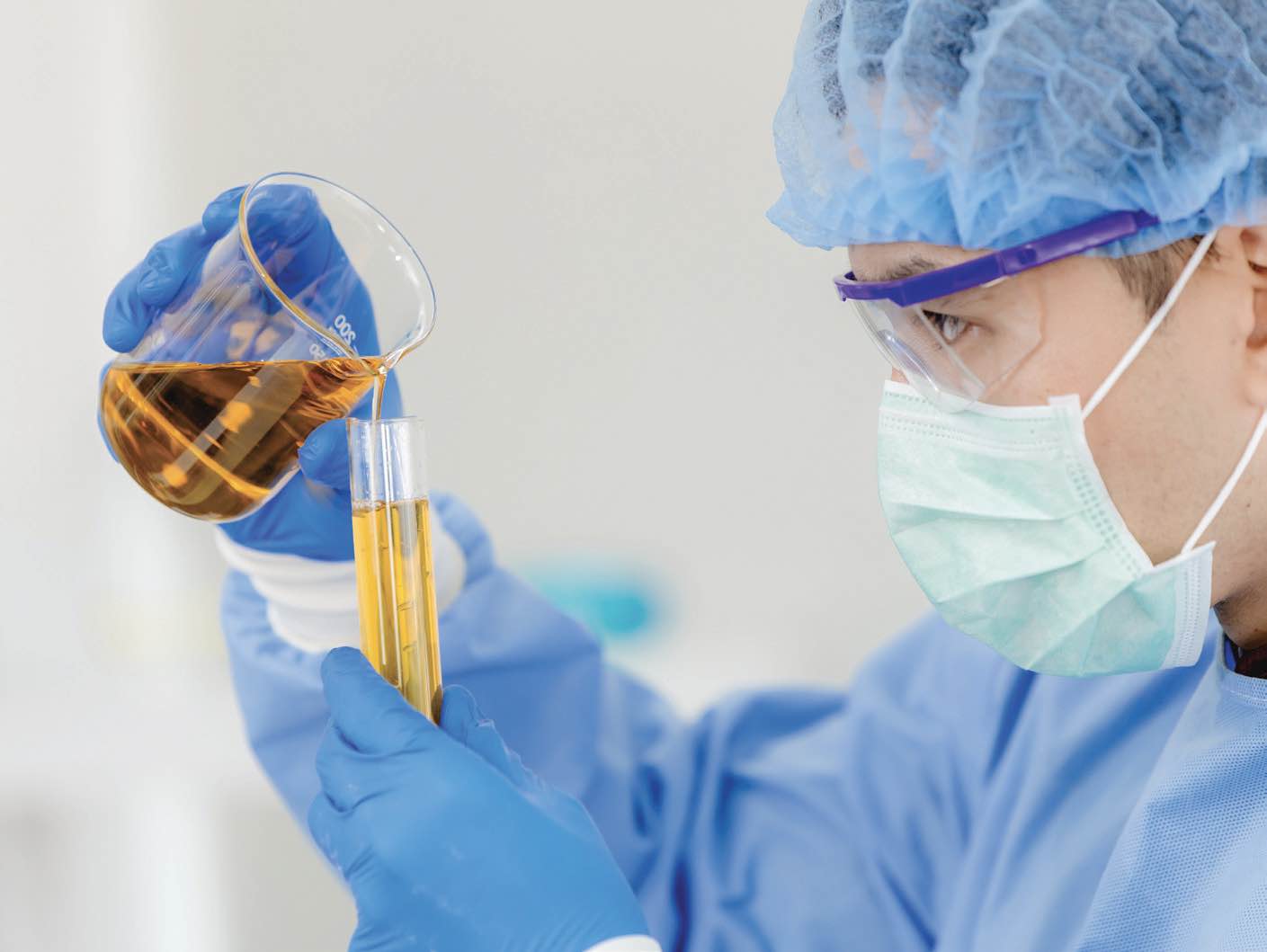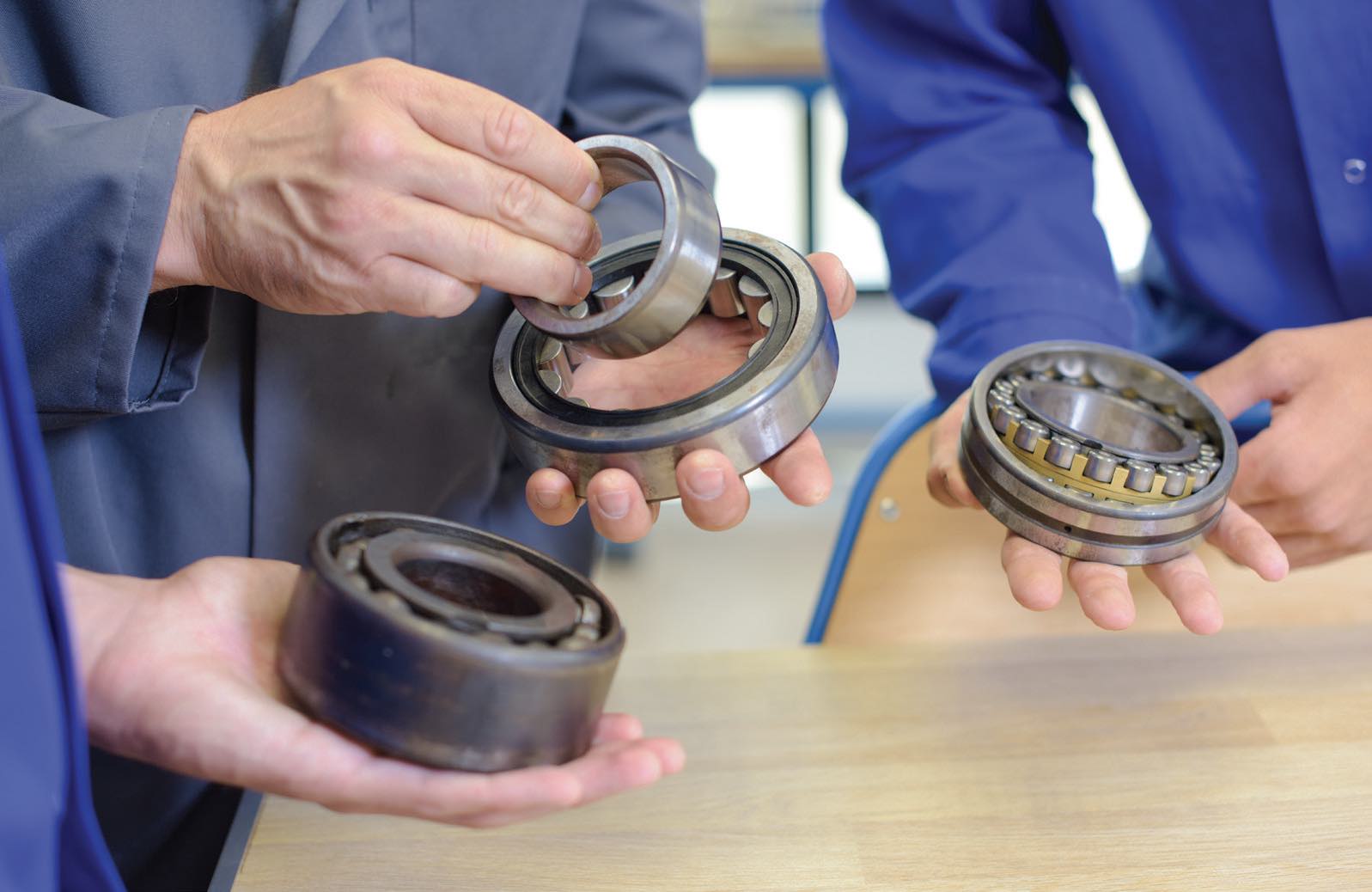Executive Summary
Lubrication professionals face broad challenges including developing effective maintenance strategies, choosing the correct lubricants for an application and applying them optimally. A huge majority of readers have confronted these challenges and developed stronger skills as a result. Additionally, addressing new challenges contributes to innovation and development in the field.
Q.1 What has been one of your biggest tribology or lubrication challenges?
To achieve realistic computational times in my multiphase computational fluid dynamics (CFD) simulations, which model the flow of lubricant within the bearing.
With more frequent changes in man-power, keeping the new employees up to speed and basic training.
Formulation chemistry.
Sometimes it is getting the buy-in from plant locations to trust that what we are offering in the lubricants, or changes to existing products, is the right move. New filtration also is a hurdle when equipment is becoming more sophisticated.
Preparation of stable nanogrease including lithium grease with TiO2 nanoparticles.
Developing the technology to ultrafilter lubricating greases for the aerospace industry.
Changing a coolant that has not been completely replaced for 50 years.
Machinability of glasses, metals and ceramics.

The biggest lubrication challenge is that testing is often limited to laboratory tests and that field tests are not anymore considered as essential in the design of a formulation.
Lack of training and documented (written/formal) procedures in handling lubricants to prevent quality issues during all phases of the supply chain.
Tribology is a proven science which is constantly being adapted to challenging demands. Tribology is driven by ideology; creative energy, funding and talents are squandered in search of solutions for the issues driven by ideology and not necessity.
Formulating lubricants with the changing assessments (as per safety data sheet [SDS]) for various additives, used for many years and relatively new.
Solving a friction problem. Involved coordinating a team across several companies.
Effective use of vegetable-based lubricant in a hydraulic system in wide-ranging temperatures (from sub-zero temperatures creating a solid mass to very high temperatures creating varnish).
Highly intermittent operation in high voltage applications. For example, 1/4 turn of a bearing every six months in a device controlling 250 kV service.
Electric erosion in bearings.

Emission of carbon and materials degradation.
Lack of maintenance strategy and discipline to adhere to a maintenance strategy.
Dealing with regulatory bodies to obtain certification of products.
Trying to convince users of the long-term value of using the proper lubricant.
Getting technical information on driveline fluids.
Heavy duty stamping with a synthetic drawing fluid.
Proper grease application.

Getting the end-user to understand quality over cheap.
Measuring elastohydrodynamically lubricated (EHL) contacts for greases.
Cost effective synthetic gear oils for high speed, elevated temperature applications.
Varnish and likewise deposits on bearing faces.
Finding resources to improve tribology and lubrication knowledge.
Finding a product that works at temperatures above 200 C without coking.
Developing a new class of ferrous materials for abrasion resistance applications.
Modeling of bearing/sealing parts of hydraulic components.
Develop the grease which is high performance to the customer.
Surface structure design.

Seals for gas turbines.
Formulating military specification (MIL-SPEC) lubricants.
Next generation low viscosity automotive gear oils and passenger car oils having tribology. Challenges to attend the required lubrication film at hydrodynamic regime and friction and wear protection at boundary lubrication regime.
Limited slip clutch (LSC) lubricant development. To deliver a steady coefficient of friction over a wide range of slip, 0-15 rpm. We developed successful generations of LSC lube through a decade of diligent work with an OEM and a technical university. This has become the leading technology for passenger cars in Europe.
My current doctoral project: modeling of the mixed lubrication regime for cold rolling of steel.
Testing the influence of individual components in a blend.
Measuring the remaining useful life of turbine oils.
My biggest challenge relates to studying tribocorrosion at the single asperity level. We are engaged in developing methods for mass balance analysis of tribocorrosion degradation using atomic force microscopy (AFM) and micron-scale motion and asperity radii. This includes single crystal and bicrystal interactions, plasticity-based and atom-based wear mechanisms.
Has the challenge made you a better tribologist or lubrication engineer?
Yes
96%
No
4%
Based on an informal poll sent to 15,000 TLT readers.
Are you happy to discuss the challenge with your protégés?
Yes, in depth
64%
Yes, superficially
27%
No
9%
Based on an informal poll sent to 15,000 TLT readers.
Low temperature tribological protection in rolling bearings, especially under small amplitude motion.
Air contamination and ways to demonstrate it (measure it).
We are still looking for a lubrication solution of standstill markings for rolling bearings.
Lack of commitment and interest of mechanical technicians to follow lubrication oil program guidelines, such as lack of detailed notes of oil sampling, lack of date of sample date, sampler name and proper lube oil sample bottle label. Lack of standard oil handling containers and dispensers.
One of the greatest lubrication challenges that I have had was on a product mixer which had heavy, slow moving steam heated paddles that were heavily loaded. They were supported by tapered roller bearings and had large, heavy open face gears that drove them. And because this was a food plant, only H1 lubricants could be used for both the bearings and the gears.
Vibration in a 1,000 hp blower by oil whirl (eddy) in journal bearings.
Q.2 How have these challenges improved your knowledge in tribology or lubrication?
I have learned to optimize my meshing strategies and develop efficient CFD models.
Personally, not much. I keep up to date on the changes in the lubrication field then pass this information on periodically.
The best way to learn anything is having to figure it out the hard way.
Just keep learning with new technologies available and working with strategic partners who are experts in their field and bringing a holistic approach to end-customer.
Yes, recognition of the method preventing nanoparticles’ agglomeration.
Yes, ultrafiltration not only removes deleterious particulate contamination from grease, but it also homogenizes the thickener resulting in reduced bearing noise and access to the inlet zone.
Lab tests never replace full-scale trials.
Graduate work on friction and wear of ultra-high speed and high current of copper graphite electrical brush materials.
Immensely. It helps to focus on the key issues in maintaining lubricant quality before it even gets to the application.
I am more aware of the toxicological and environmental profile of additives I may use and evaluate the impact for the SDS of the proposed formulation prior to any significant testing. Also, I am paying more attention to potential changes in additive SDSs due to ongoing testing even if the results are several years out.
Learned a bit more about statistical models.
Registering with STLE to better understand all the nuances of fluids and lubrication, and how to better apply them in the various systems we work with.
The most important property of these lubricants shifts from viscosity to life. The bearings must move within a specified time, which requires careful selection of lubricants. Selecting lubricants that show consistent properties over a long period of time. Operating in high voltage fields also can degrade lubricants, resulting in gaseous flammable products.
Raised awareness about the importance of the EHL-mixed lubrication (ML) transition.
I’ve taken steps forward to develop the alternatives for the challenge, and I hope that this would be helpful for climate change protocols.
Approximately 50% of failures occur because of bad lubrication practices and contamination in contact surfaces.
I realized that old standards change, and they are for the betterment of safety in hydraulics.
That forces me to better understand what they are currently using for lubricants and exactly how their machine operates.
More effort to meet technical people at STLE meetings and seek out other information.
You have to go back to learning the basics and then apply them to a more complicated situation.
Prompted further investigation into operating temperature and environment.
Understanding tribology and formulations helps you to educate the consumer on quality.
Highlighted how not all standard tests can work for different lubricant formulations.
By researching novel materials and chemicals to improve performance.
Recognize issues (varnish) in time.
After finding information and then putting the knowledge to use, my own knowledge improved when seeing first-hand situations.
Learned about base oils beyond mineral oils (Group V).
Including thermal and elastic effects, lubricant properties and surface interactions.
Apply to a similar evaluation method from engine development.
Consult with advisor and read textbooks. Sometimes I will join the tribology seminar to improve my knowledge.
Engineers and scientists in this field continually strive to expand their knowledge to address the ever-evolving challenges associated with friction, wear and lubrication in mechanical systems.
It improved my synthetic base oil and additive knowledge.
Very in-depth studies of base oil and additive interaction with the material combination in the clutch, the testing methods of the OEM and the end-users in the auto industry.
Lots and lots of reading, a good supervisor and just trying something instead of deliberating why it could go wrong.
We have introduced the concept of antagony in tribocorrosion where oxidation can impede subsequent degradation. This is in contrast to the field’s assertion of synergy.
Pushed us to develop new approaches to designing materials to meet the challenges both in formulations and testing spaces.
Better understanding of the implication on the system survival.
When the criteria of total loss met, automatically improve basis of knowledge.
The understanding of the processes occurring in the contact zone between the rolling element and the raceway has already increased significantly. The exchange with colleagues in this special field has contributed enormously to this.
Lack of a proper and clean oil sampling process leads to unnecessary cost of resampling and wrong oil analysis data.
A lot had to be learned about what kinds of oils and greases were available that would provide the lubricity needed to protect the moving parts and withstand the high temperatures.
A lot! I have to investigate so much to find the root cause of the failure.
These challenges invite thorough study with inclusion of multiple factors.